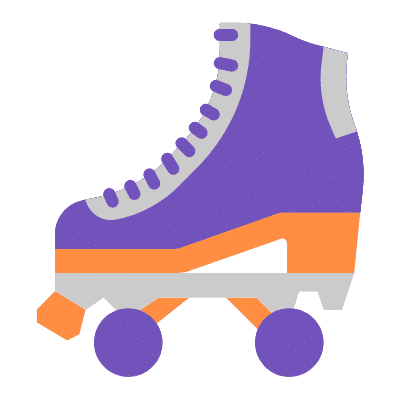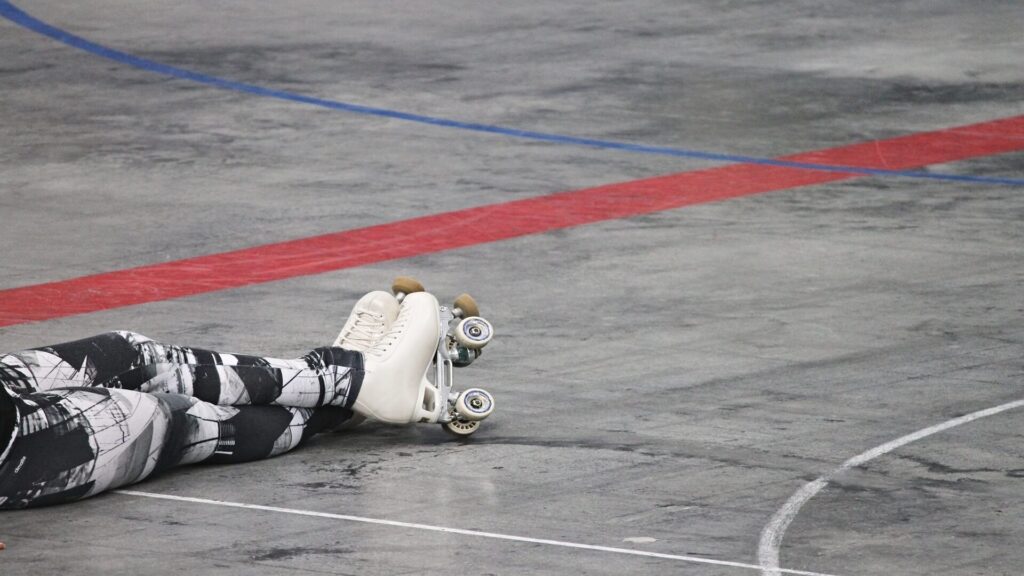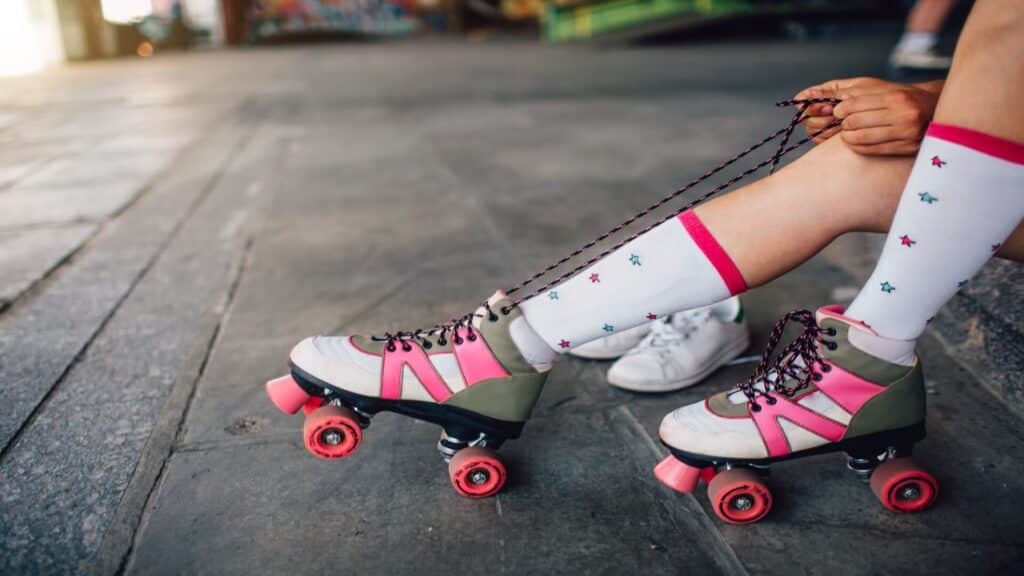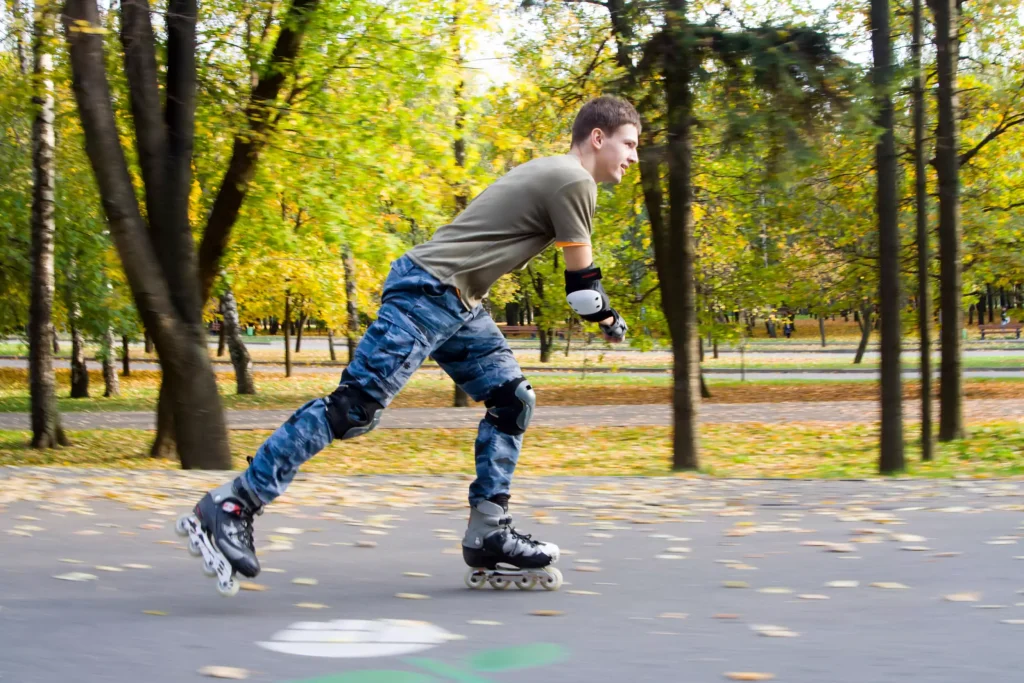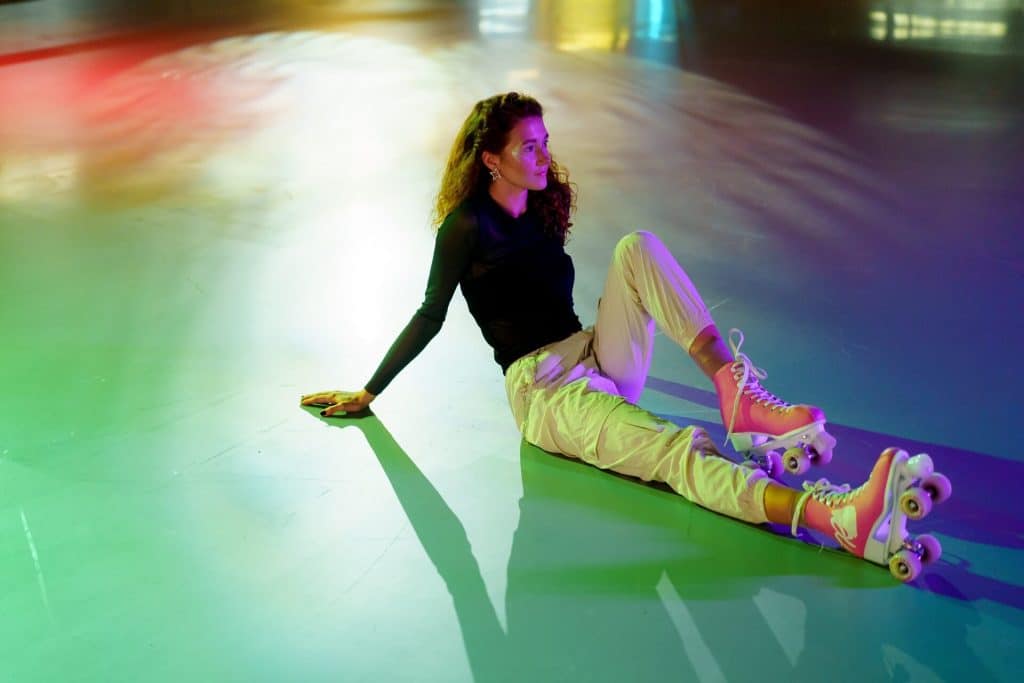Roller skating is a fun, exhilarating, and surprisingly healthy activity that combines a cardio workout with balance and agility training. Yet, the art of roller skating can seem quite challenging at first, particularly when it comes to learning how to balance on roller skates.
With a little patience, some physical conditioning, and an understanding of the basics of roller skates, anyone can learn how to keep balance on roller skates and enjoy this fascinating sport.
Table of Contents
Understanding Roller Skates
Before delving into our main subject of how to balance on roller skates, it’s crucial to understand what you’re balancing on.
Different Types of Roller Skates
Primarily, there are two types of roller skates – quad skates, with two wheels at the front and two at the back, and inline skates, with all wheels in a single line. Quad skates are typically easier to balance, making them a suitable choice for beginners.
Components of a Roller Skate
Understanding the parts of roller skates is equally essential. The boot, wheels, trucks, and toe stop play different roles in helping you maintain balance on roller skates.
Choosing the Right Skates
Picking skates that fit you well can significantly impact your ability to balance. Roller skates should be comfortable, and snug, and provide ample ankle support.
Basic Preparation Before Skating
Preparation is key to achieving balance on roller skates. Equip yourself with the necessary safety gear – helmets, knee pads, wrist guards, and elbow pads – and ensure your skates are worn correctly and checked for safety.
Physical Conditioning and Strengthening
A certain level of physical fitness is required when learning how to balance on roller skates. Particularly, exercises that improve balance and strengthen the legs and core can be immensely helpful. Yoga, squats, lunges, and planks are a few exercises that can be beneficial for this purpose.
Basic Techniques for Maintaining Balance
Here comes the most important part – learning how to keep balance on roller skates.
Proper Skating Posture
The first thing to learn when figuring out how to keep balance on roller skates is establishing the correct posture. A good posture involves more than just standing upright on your skates; it requires precise body positioning to enhance stability.
- Body Alignment: Keep your body straight and upright. Your head should be up, looking forward, not down at your feet. Your shoulders should be rolled back and down, aligning with your hips.
- Knee Bend: Slightly bending your knees is crucial. A slight knee bend lowers your center of gravity, making you more stable on your skates. Try to maintain this knee bend throughout your skating.
- Lean Forward: Lean forward just a little to counteract the tendency to fall backward. However, be careful not to lean too far forward as it could cause you to fall.
- Arms Position: Keep your arms slightly extended to your sides, ready to adjust and aid in balance.
Correct Foot Positioning
Your feet’s positioning is an essential element in maintaining balance on roller skates. Here’s how to position them correctly:
- Feet Shoulder-Width Apart: Keep your feet approximately shoulder-width apart. This stance gives you a stable base and helps prevent your feet from slipping out from under you.
- ‘V’ Position: Position your feet in a ‘V’ shape, with heels closer together and toes pointing slightly outwards. This position not only gives you stability but also helps in the initial push-off when starting to skate.
- Weight Distribution: Distribute your weight evenly across both feet. Try not to lean more on one foot as it could cause you to lose balance.
The Role of Core Strength
Having a strong core is essential for balance in roller skating. Your core muscles, which include your abdominals, back, and pelvic muscles, keep your body stable and upright when moving. Engage your core while skating to maintain balance and control. Consider integrating core exercises into your fitness routine to improve your skating balance.
We have written a comprehensive article detailing the muscles utilized during roller skating. Click the link below for more in-depth information on how roller skating engages muscles throughout your body.
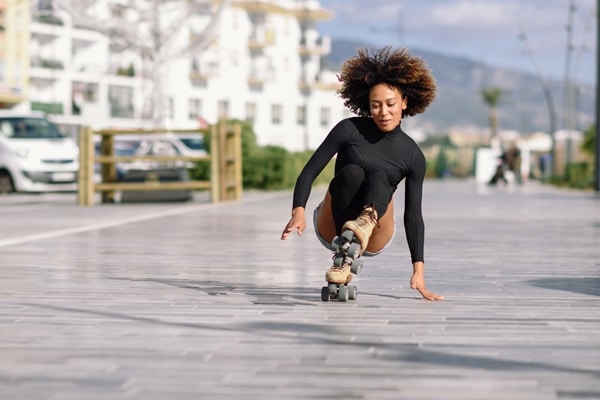
Advanced Balance Techniques
Mastering basic balance techniques is the foundation, but as you progress in your roller skating journey, you’ll need to develop more advanced skills to keep balance during trickier movements.
Using Crossovers for Turning
Performing a smooth turn on roller skates involves a technique called “crossovers.” Here’s a simple guide on how to perform crossovers:
- As you approach the turn, bend your knees and prepare to shift your weight.
- If you’re turning right, lift your left foot and cross it over the right one, placing it on the ground. If you’re turning left, do the reverse.
- Push off from the foot on the ground to gain momentum and maintain your balance throughout the turn.
- Keep practicing until you can perform crossovers smoothly and without losing balance.
Balancing During Sudden Stops
Stopping suddenly while maintaining balance can be a challenge for many roller skaters. Here’s how to do it correctly:
- T-Stop: The T-stop is a widely used method to slow down and stop. To execute it, shift your weight to one foot and place the other foot behind it perpendicular, forming a ‘T’ shape. Gradually apply pressure on the back foot to slow down.
- Plow Stop: Another method to stop is the plow stop. Bend your knees, point your toes inward, and push your heels out, causing friction that slows you down.
If you wish to read more about stopping techniques click on this link and read our full guide.
Skating Backwards
Skating backward is a thrilling skill but can feel intimidating. Here’s how to do it:
- Start in the ‘V’ position, but this time with your toes facing each other.
- Push your feet apart, then bring them back to the middle in a smooth motion, propelling you backward.
- Remember to keep your knees bent and your core engaged to maintain balance.
Practicing these advanced balance techniques can greatly enhance your roller skating experience, making it more enjoyable and versatile. As always, practice is key. The more you practice, the better your balance will become.
If our tutorial wasn’t enough you can watch a tutorial video from the YouTube channel Skatie:
Regular Practice and Improvement
Improving balance on roller skates comes with regular practice. Whether it’s 20 minutes a day or a few hours every week, consistency is key. Keep track of your progress, set small goals, and celebrate when you achieve them. Joining a community of roller skaters can also motivate you to practice more and learn from others’ experiences.
Conclusion
The journey of learning how to balance on roller skates might be challenging at first. But with patience, practice, and the right approach, it becomes a fun and rewarding activity. It’s all about starting small, embracing your falls as part of the learning process, and gradually improving your skills.
With time, not only will you master how to keep balance on roller skates, but you’ll also open up a world of new tricks and techniques to try. And most importantly, you’ll experience the joy and freedom that comes with gliding on wheels. So, strap on those skates, and let the good times roll!
Frequently Asked Questions
Question: How long does it take to learn how to balance on roller skates?
Answer: The timeline can vary widely from person to person. Some might start to feel comfortable after a few days of consistent practice, while others might take a few weeks.
Question: Are quad skates easier to balance on than inline skates?
Answer: Yes, generally, quad skates are considered easier to balance on for beginners due to their wider wheelbase.
Question: What should I do if I keep losing balance while roller skating?
Answer: Firstly, ensure that your skates fit correctly and that your safety gear is in place. Practice basic balance exercises, such as standing on one foot, and remember to keep your knees slightly bent while skating. Regular practice is key.
Question: Can roller skating help improve overall balance?
Answer: Absolutely. Roller skating is a fantastic activity for improving balance and coordination. It works on your core and leg muscles, which are crucial for maintaining balance.
Question: Is it normal to fall a lot when learning how to balance on roller skates?
Answer: Yes, falling is a natural part of the learning process. The important thing is to learn how to fall safely to minimize the risk of injury.
Question: Are there exercises I can do off the skates to improve balance?
Answer: Yes, exercises like yoga, Pilates, and even simple exercises like standing on one foot can significantly improve your balance over time.


